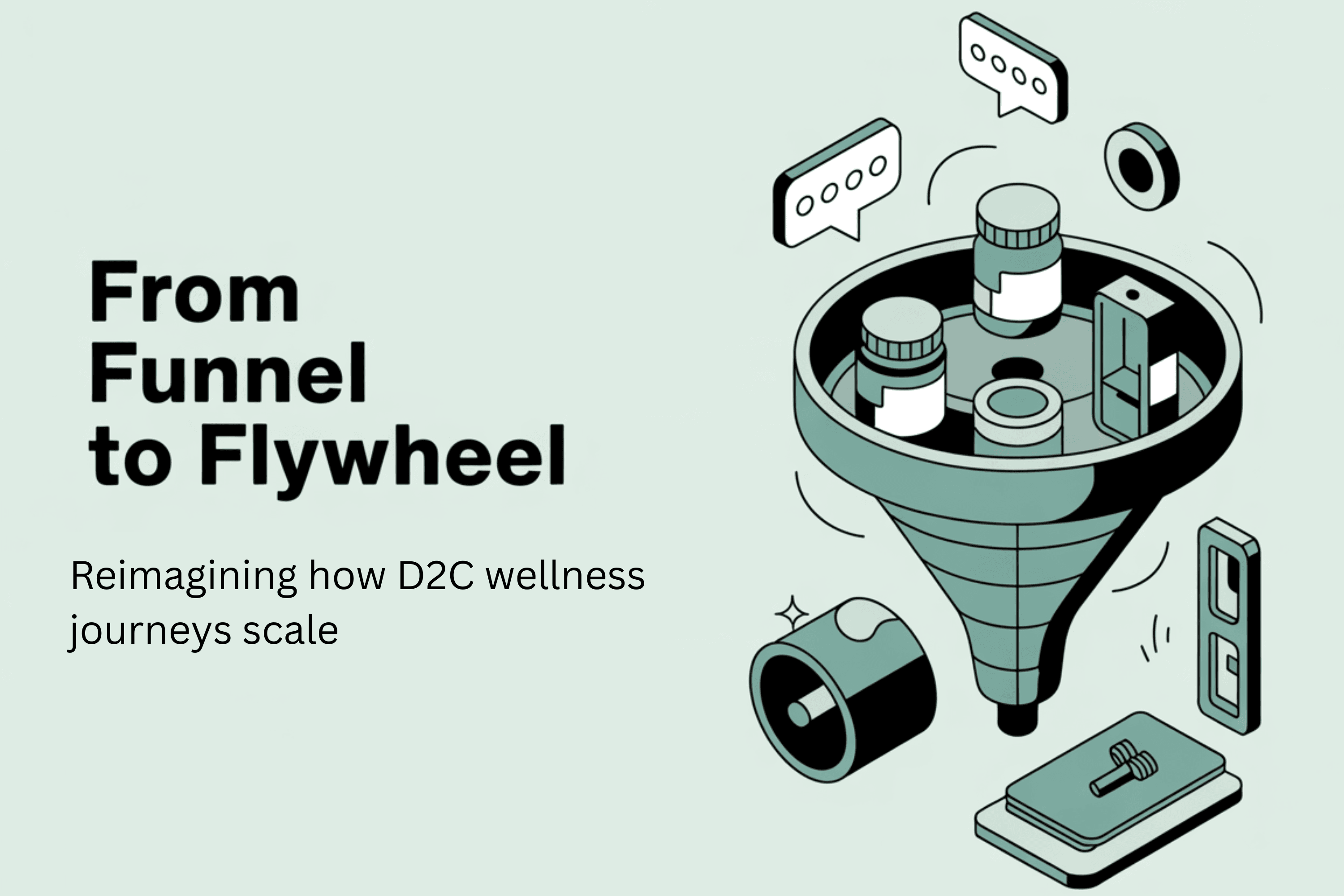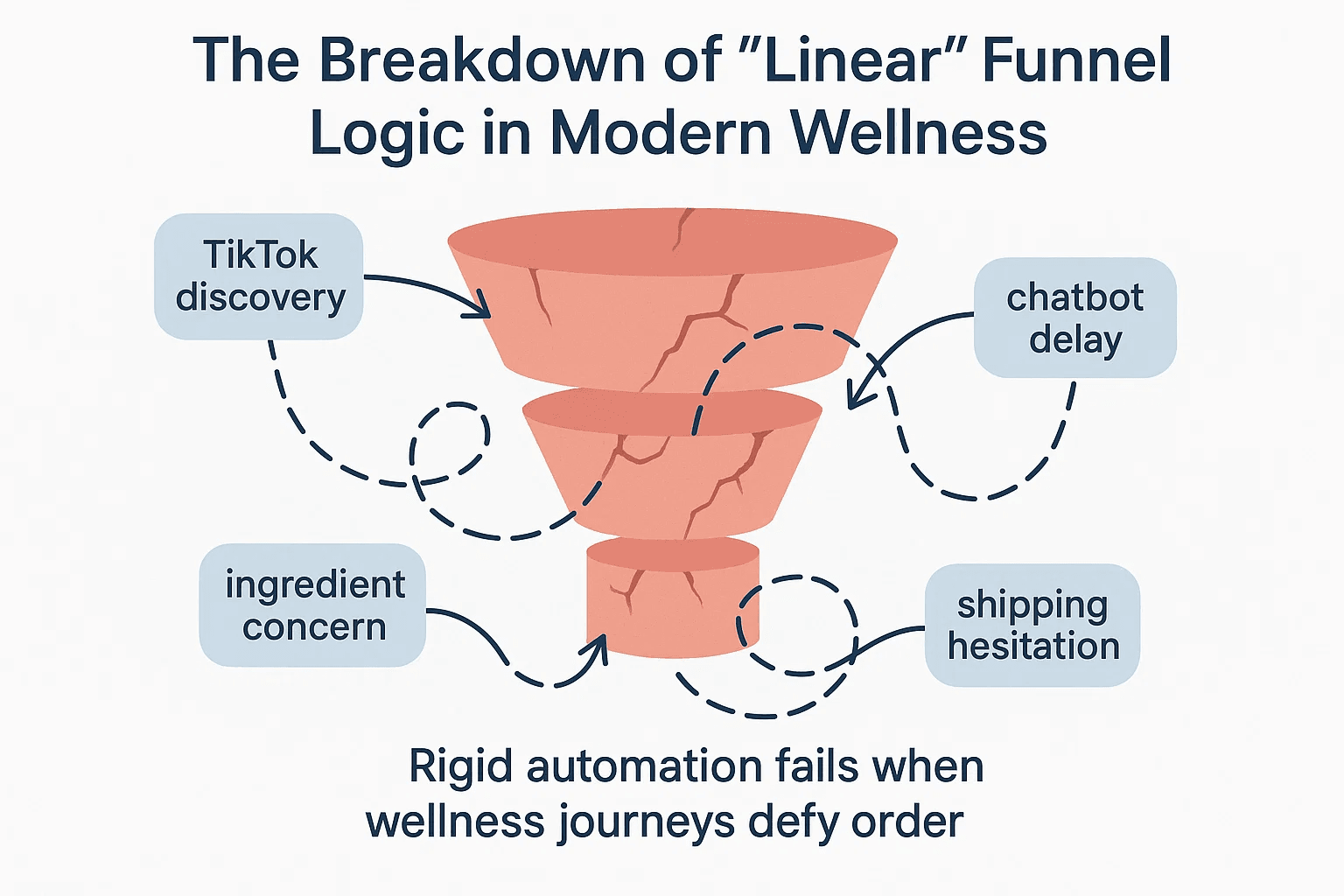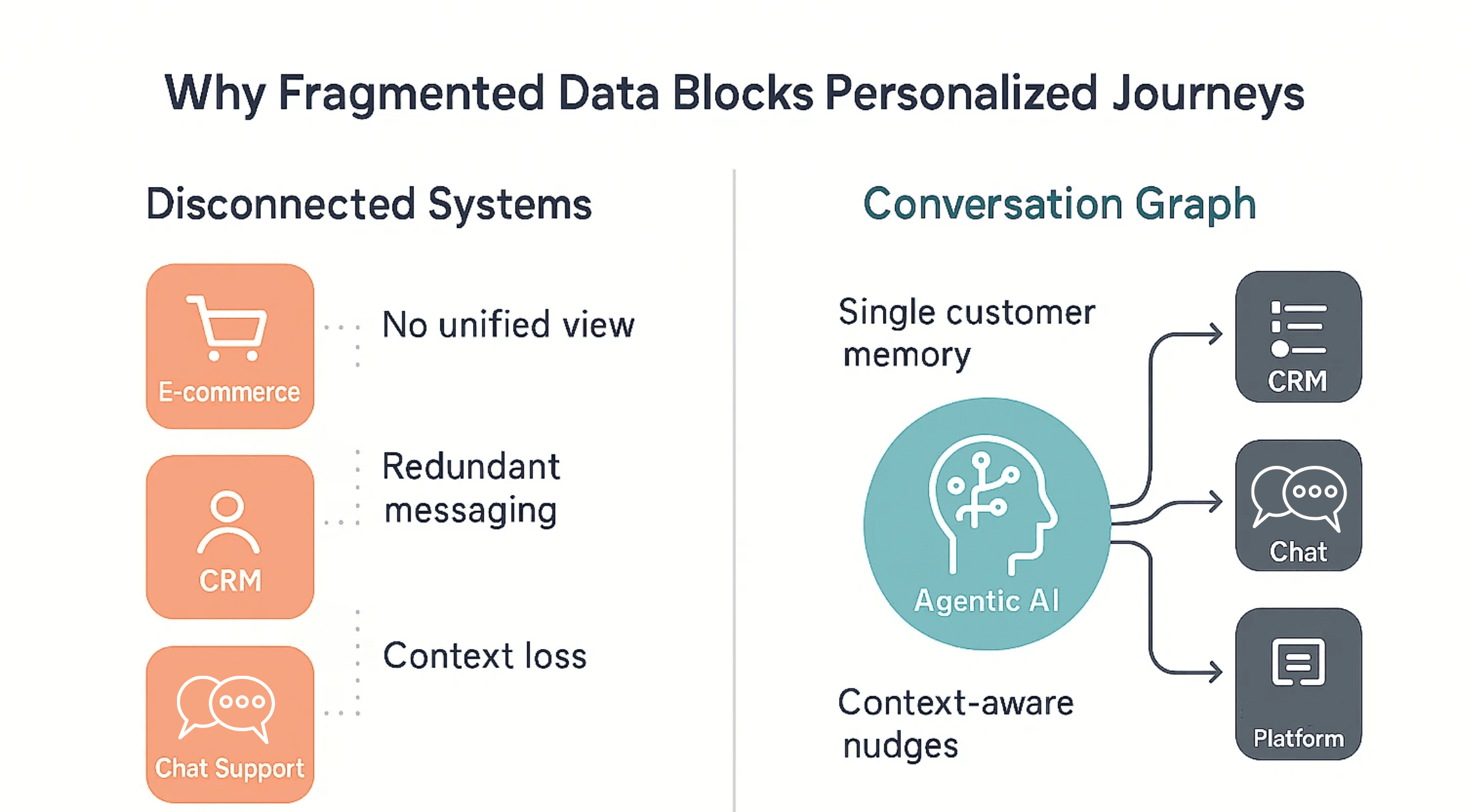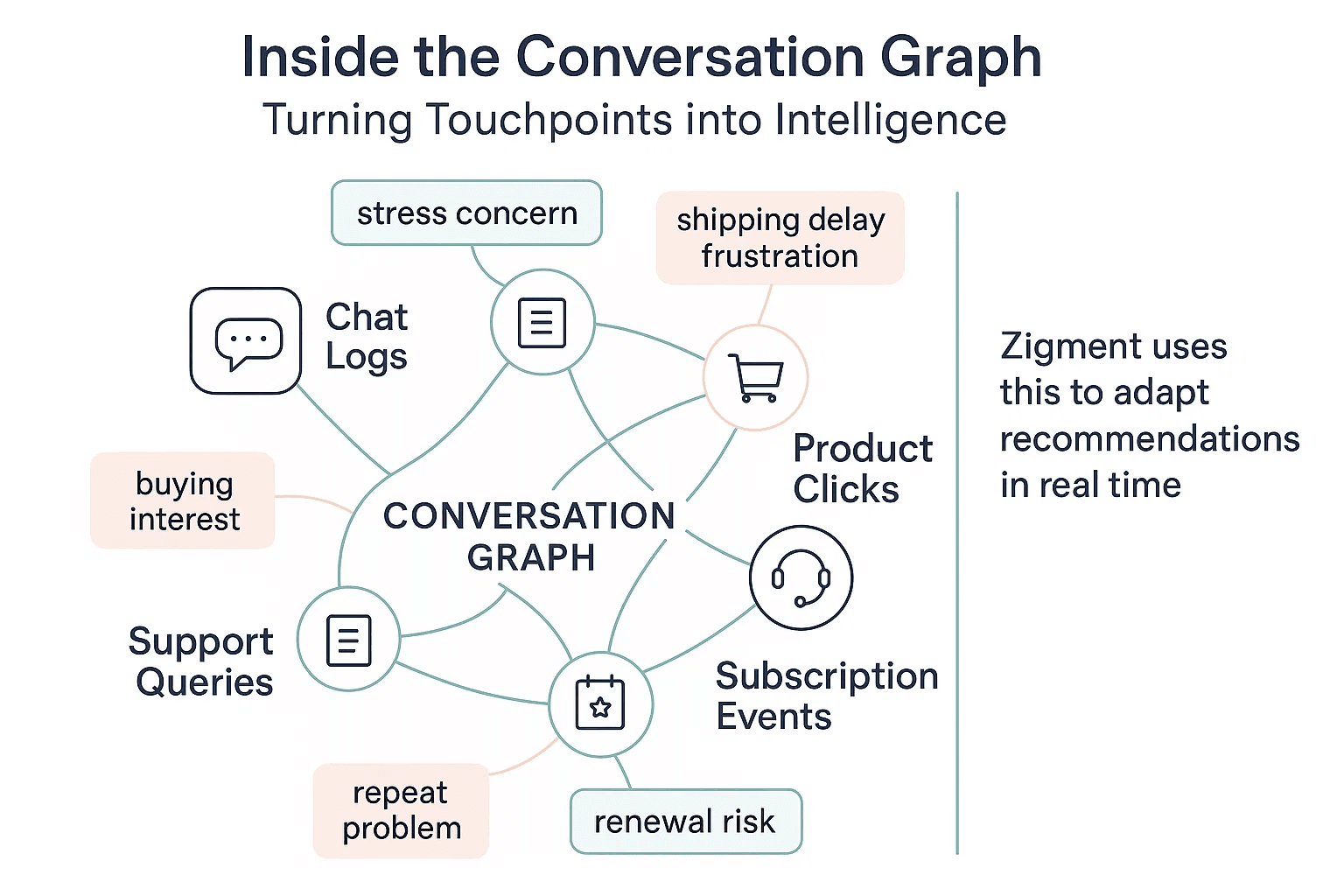Agentic AI in D2C Wellness: Transforming Intent into Long-Term Loyalty

The D2C wellness boom has moved far beyond protein powder subscriptions and yoga mats. Today’s shoppers expect personalised guidance, quick answers, and a sense that the brand “gets” their lifestyle goals. Traditional marketing automation—scheduled emails, static drip flows, abandoned-cart nudges—was designed for a world of clicks and forms. It struggles when a customer wants to chat about vegan collagen at 2 a.m., gets distracted mid-purchase by a smartwatch notification, and resurfaces three weeks later asking for ingredient sourcing details. This is precisely where Agentic AI changes the game. Instead of rigid rule trees, autonomous AI agents can sense, decide, and act in real time, shaping a smoother and more profitable wellness customer journey.
How is agentic AI reshaping the traditional funnel for D2C wellness?
Traditional funnels push large audiences through awareness, consideration, and conversion. They assume people behave in neat stages. D2C wellness shoppers rarely do. One TikTok video can leapfrog them from discovery right to checkout; a single unanswered nutrition question can dump them back into indifference. Agentic AI turns the linear funnel into an adaptive flywheel. Each customer touchpoint—social comment, SMS reply, refill reminder—feeds fresh intent data into the agent, which then spins the next best action without human delay.
Stage-by-Stage Impact
1. Discovery
Wellness search behaviour is question-driven: “Why am I bloated after running?” “Which adaptogen boosts focus?” An AI agent embedded in your site chat or Instagram DMs can answer in plain language, reference your product where relevant, and tag the visitor’s concern (digestion, stress, performance) for later personalisation. According to Shopify’s 2024 Health and Wellness Commerce Report, customers who receive a helpful answer in under 30 seconds are 2.3× more likely to join a mailing list.
2. Consideration
Ingredient trust drives many buying decisions. Instead of a static FAQ page, an Agentic AI can parse lab-test PDFs, sourcing certificates and sustainability audits, then serve verified snippets on request. It remembers follow-up questions, so a returning visitor feels continuity.

3. Purchase
Cart-level discounts still work, but timing matters. Industry benchmarks show that real-time assistance (chat or WhatsApp) reduces wellness cart abandonment from 68 % to 42 % on average. An Agentic AI can detect hesitation signals—scrolling between product pages, revisiting shipping terms—and proactively offer a comparison chart or limited-time bundle, nudging the shopper over the line.
4. Onboarding
Supplements, workout equipment, and tele-wellness apps often demand habit formation. A short onboarding flow powered by an agent that asks about routine, diet, or injury history can customise dosage reminders or workout tips. Customers guided by personalised micro-coaching log product usage 19 % more frequently than those who receive generic instructions, based on 2025 data from the Digital Health Engagement Index.
5. Retention and Expansion
Refill timing is tricky when consumption varies. By reading conversational cues (“Finished my last packet this week”) and order cadence, the agent predicts re-purchase windows more accurately than fixed 30-day cycles. It can introduce complementary products—electrolyte mix with pre-workout, mindfulness app trial with sleep gummies—boosting average order value without feeling pushy.
Why Agentic AI Outperforms Rule-Based Automation in Wellness
Nuanced Intent Understanding
Wellness queries are often ambiguous. “Is ashwagandha safe?” can refer to dosage, pregnancy, or drug interactions. LLM-powered agents disambiguate from context, whereas keyword flows branch incorrectly or stall.Continuous Memory
Fitness goals evolve. A customer who once trained for a 5K might pivot to strength after an injury. Agentic AI keeps a live profile, adjusting recommendations without resetting the journey.Qualitative Data Harvesting
Mood, motivation, and even taste preferences appear in chat and voice. Traditional CDPs capture clicks; agents capture sentiment and surface it for product teams.Omnichannel Consistency
Whether the customer arrives via Pinterest pin, outbound e-mail, or QR code on an expo sample, the agent references past context, creating a seamless brand feel.

How should D2C wellness brands start implementing AI?
Map Conversational Hotspots
List the top ten questions asked on chat, social comments, and support tickets. These become the agent’s starter skill set.Connect Data Islands
Sync e-commerce events, subscription app info, and support platforms into a Conversation Graph. The agent needs a unified context to personalise.Start with a Single Journey
Many brands begin with an inbound chat agent on product pages, then expand to replenishment reminders or outbound post-purchase check-ins.Set Guardrails
Wellness advice carries regulatory risk. Fine-tune the agent’s knowledge base and add disclaimer triggers for medical claims.Measure What Matters
Track engagement time reduction, conversion uplift, and support ticket deflection, not vanity metrics like bot greetings sent.
Benchmarks to Gauge Success
KPI | Pre-Agentic Baseline | 6-Month Agentic Target |
|---|---|---|
First-response time (chat) | 2 min | < 10 s |
Qualified email capture rate | 8 % | 18 % |
Cart abandonment | 65 – 70 % | < 45 % |
Subscription churn (90 days) | 25 % | < 15 % |
Average order value | $ 48 | $ 58 |
Return on Effort
Agentic deployment is often measured in weeks, not quarters. Brands that integrate a plug-and-play agent typically see payback within three months, driven by labour savings and lift in conversion. Model your ROI with two levers:
Human minutes saved (support + sales × hourly wage)
Incremental gross margin from higher AOV and repeat purchase frequency
Add them, subtract platform cost, and you have a clear business case.
Potential Pitfalls and How to Avoid Them
Over-automation
Replacing all human touchpoints can feel impersonal. Keep a fast hand-off to specialists for edge-case nutrition or medical queries.Data Privacy
Storing health-related preferences touches HIPAA-like territory in some regions. Ensure SOC 2 and compliant data handling.AI Hallucination
Unverified health claims can erode trust. Use retrieval-augmented generation with curated knowledge sources, and add a real-time monitoring dashboard.
How will agentic AI reshape wellness brands?
As wearables and at-home labs feed real-time biometrics, Agentic AI can blend behavioural cues with physiological data. Imagine a supplement brand whose agent watches a customer’s sleep score drop and suggests a magnesium blend, delivering it the next morning via local fulfilment. The line between health coach and commerce companion blurs, and wellness brands that master agent-driven journeys will hold a defensible moat.
How does Zigment give D2C wellness brands an advantage?
Zigment’s platform is purpose-built for this new landscape. Its omnichannel Agentic AI agents engage customers on every entry point—web, social, email, SMS, voice—while the Conversation GraphTM, its proprietary Conversational Data Layer, stores the clicks and the qualitative cues that rule-based systems miss. Pre-built wellness templates handle inquiries about ingredients, routines and shipping without manual flow-building.

A drag-and-drop automation studio lets marketers launch nurture or outbound campaigns in minutes, and a prompt analytics console answers questions like “Which sentiment shifts predict churn?” in plain language. With SOC 2 Type II, ISO 27001 and HIPAA compliance, Zigment keeps sensitive wellness data secure. Brands that deploy Zigment typically reduce manual qualification work by ninety percent and see up to a three-times lift in conversion from the leads they already pay for—transforming conversational chaos into a customer-journey flywheel.
Agentic AI is no longer an experiment; it is fast becoming the backbone of high-growth wellness commerce. By embracing autonomous agents and the Conversation Graph, D2C wellness brands can deliver personalisation at scale, turn first-time buyers into lifelong members and stay ahead of an industry where habits change as quickly as hashtags.
